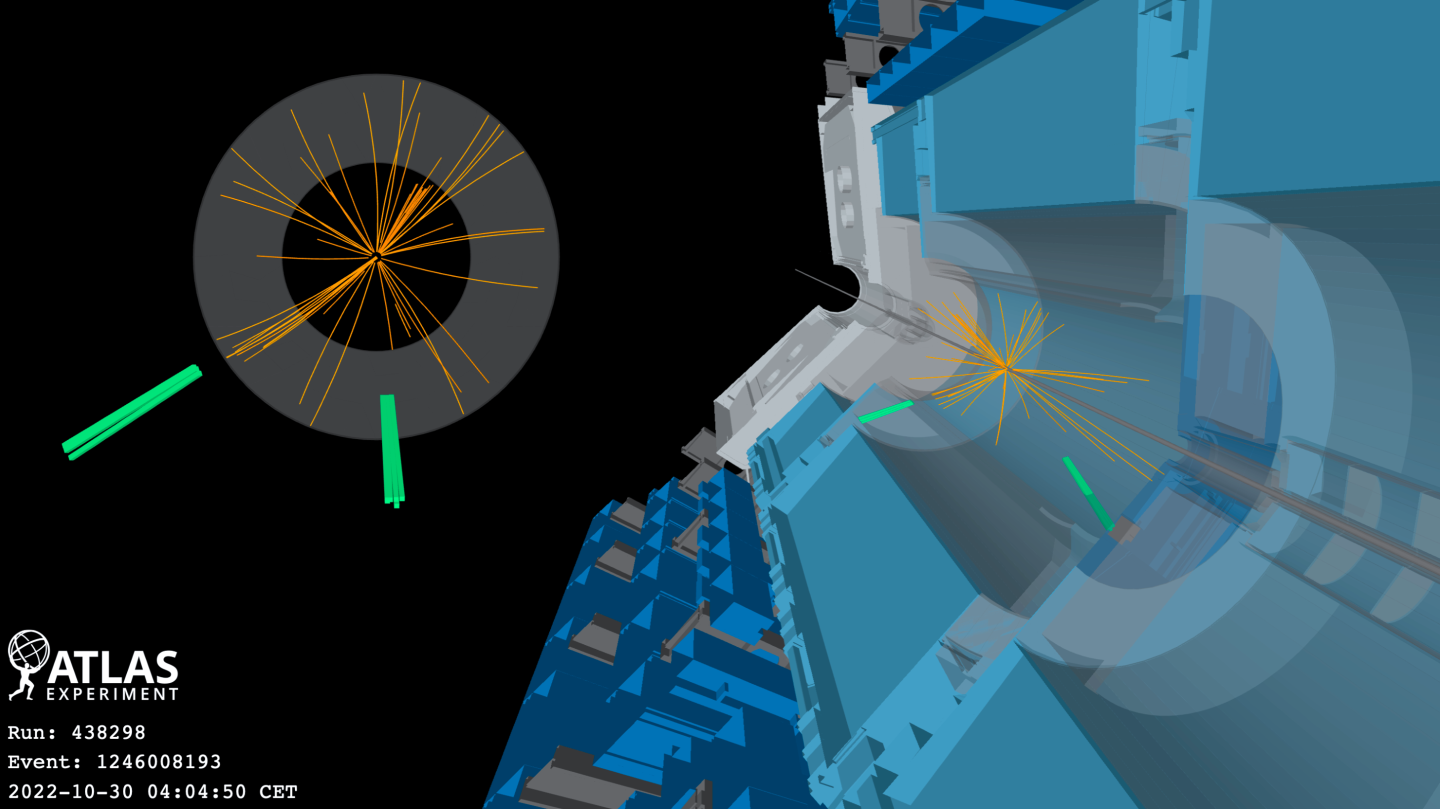ATLAS sets record precision on Higgs boson’s mass
Tuesday 8 August 2023
(0 Comments)

New result from the ATLAS experiment at CERN reaches the unprecedented precision of 0.09% In the 11 years since its discovery at the Large Hadron Collider (LHC), the Higgs boson has
become a central avenue for shedding light on the fundamental structure
of the Universe. Precise measurements of the properties of this special
particle are among the most powerful tools physicists have to test the Standard Model, currently the theory that best describes the world of particles and their interactions. At the Lepton Photon Conference this week, the ATLAS collaboration reported how it has measured the mass of the Higgs boson more precisely than ever before. The
mass of the Higgs boson is not predicted by the Standard Model and must
therefore be determined by experimental measurement. Its value governs
the strengths of the interactions of the Higgs boson with the other
elementary particles as well as with itself. A precise knowledge of this
fundamental parameter is key to accurate theoretical calculations
which, in turn, allow physicists to confront their measurements of the
Higgs boson’s properties with predictions from the Standard Model.
Deviations from these predictions would signal the presence of new or
unaccounted-for phenomena. The Higgs boson’s mass is also a crucial
parameter driving the evolution and the stability of the Universe’s vacuum. The ATLAS and CMS collaborations
have been making ever more precise measurements of the Higgs boson’s
mass since the particle’s discovery. The new ATLAS measurement combines
two results: a new Higgs boson mass measurement based on an analysis of
the particle’s decay into two high-energy photons (the “diphoton
channel”) and an earlier mass measurement based on a study of its decay into four leptons (the “four-lepton channel”). The
new measurement in the diphoton channel, which combines analyses of the
full ATLAS data sets from Runs 1 and 2 of the LHC, resulted in a mass
of 125.22 billion electronvolts (GeV) with an uncertainty of only 0.14
GeV. With a precision of 0.11%, this diphoton-channel result is the most
precise measurement to date of the Higgs boson’s mass from a single
decay channel. Compared
to the previous ATLAS measurement in this channel, the new result
benefits both from the full ATLAS Run 2 data set, which reduced the
statistical uncertainty by a factor of two, and from dramatic
improvements to the calibration of photon energy measurements, which
decreased the systematic uncertainty by almost a factor of four to 0.09
GeV. “The
advanced and rigorous calibration techniques used in this analysis were
critical for pushing the precision to such an unprecedented level,”
says Stefano Manzoni, convener of the ATLAS electron–photon calibration
subgroup. “Their development took several years and required a deep
understanding of the ATLAS detector. They will also greatly benefit
future analyses.” When
the ATLAS researchers combined this new mass measurement in the
diphoton channel with the earlier mass measurement in the four-lepton
channel, they obtained a Higgs boson mass of 125.11 GeV with an
uncertainty of 0.11 GeV. With a precision of 0.09%, this is the most
precise measurement yet of this fundamental parameter. “This
very precise measurement is the result of the relentless investment of
the ATLAS collaboration in improving the understanding of our data,”
says ATLAS spokesperson Andreas Hoecker. “Powerful reconstruction
algorithms paired with precise calibrations are the determining
ingredients of precision measurements. The new measurement of the Higgs
boson’s mass adds to the increasingly detailed mapping of this critical
new sector of particle physics.”
Find out more on the ATLAS website.
|